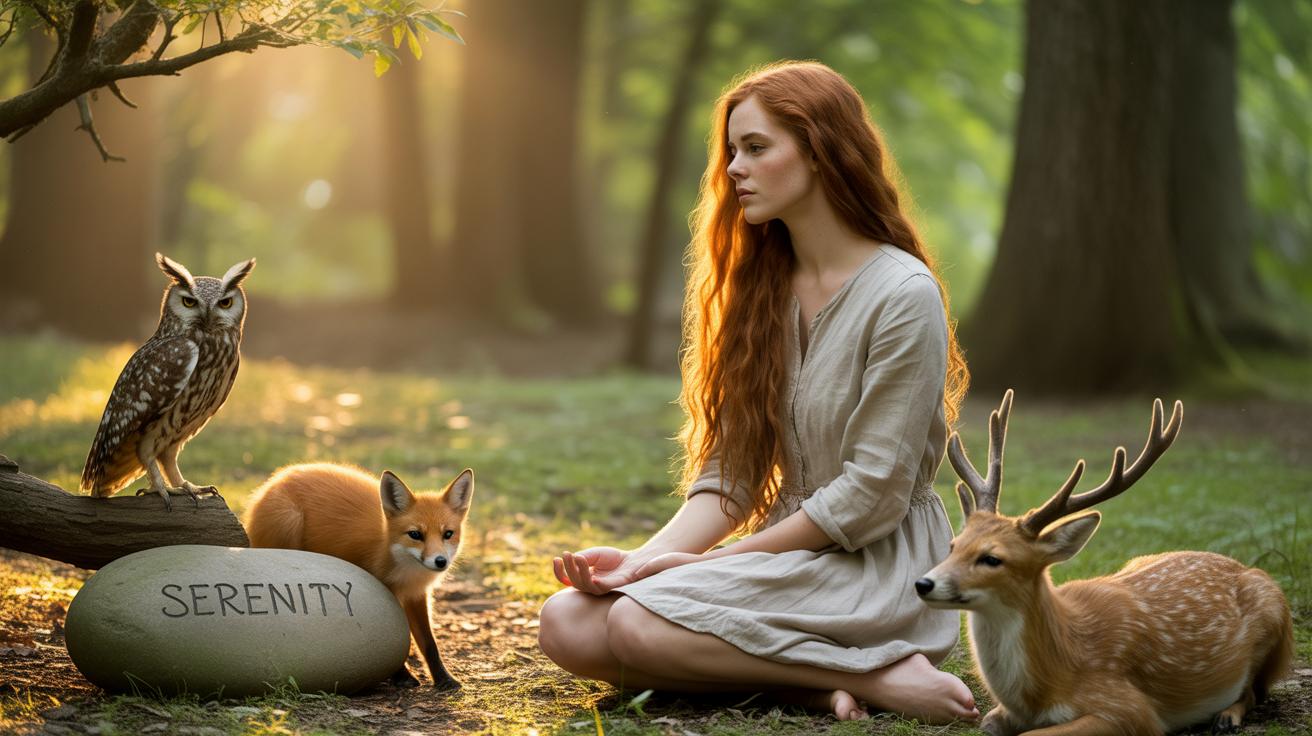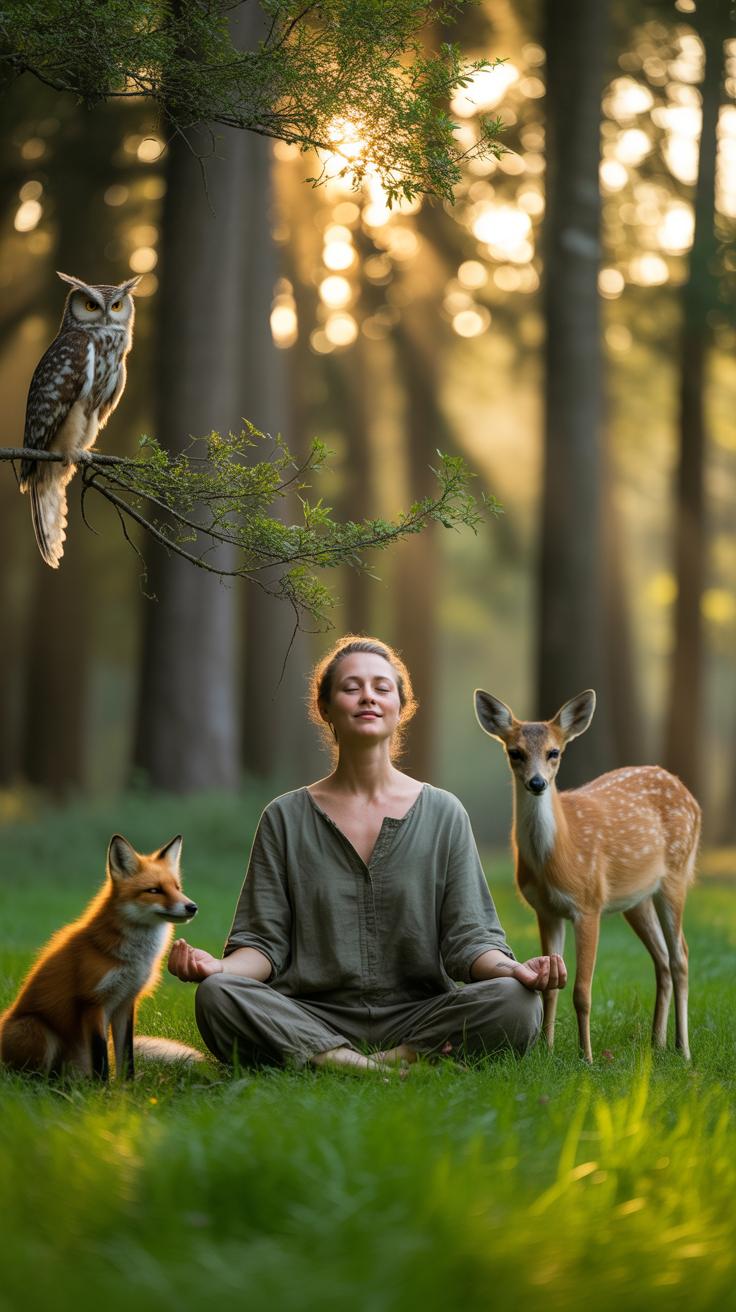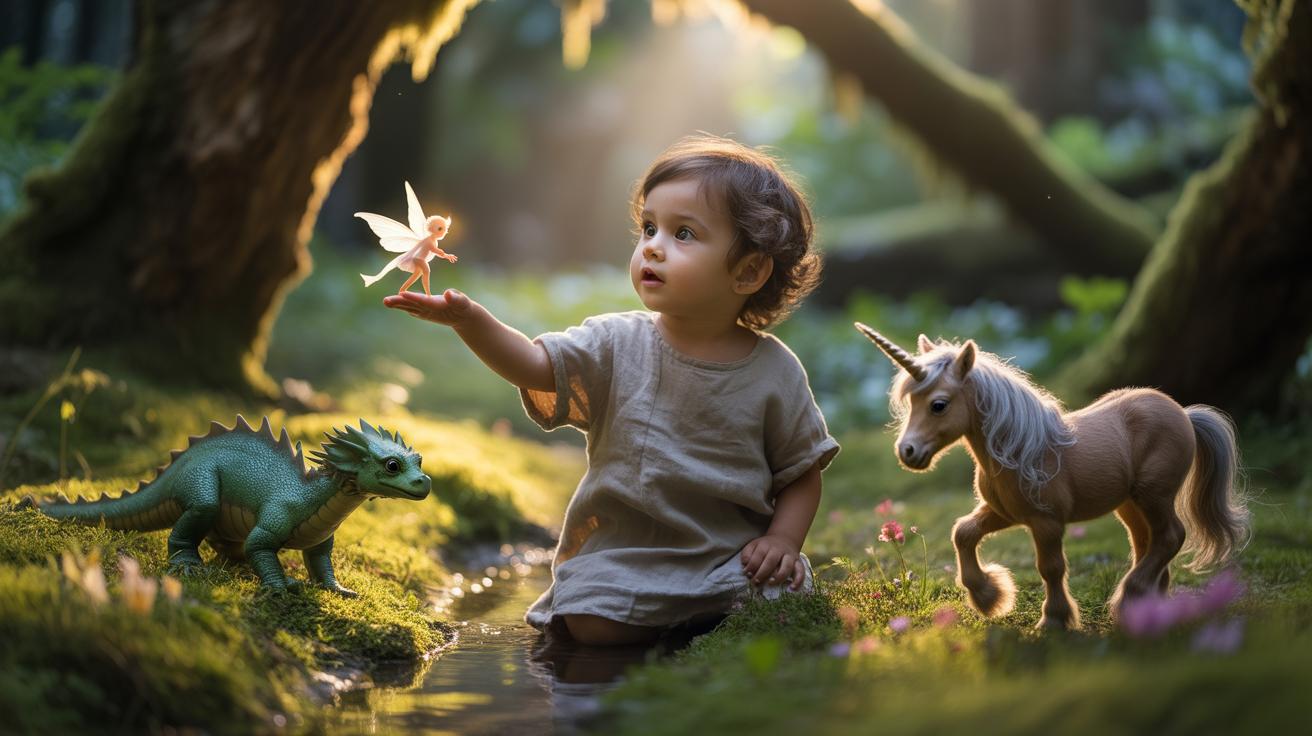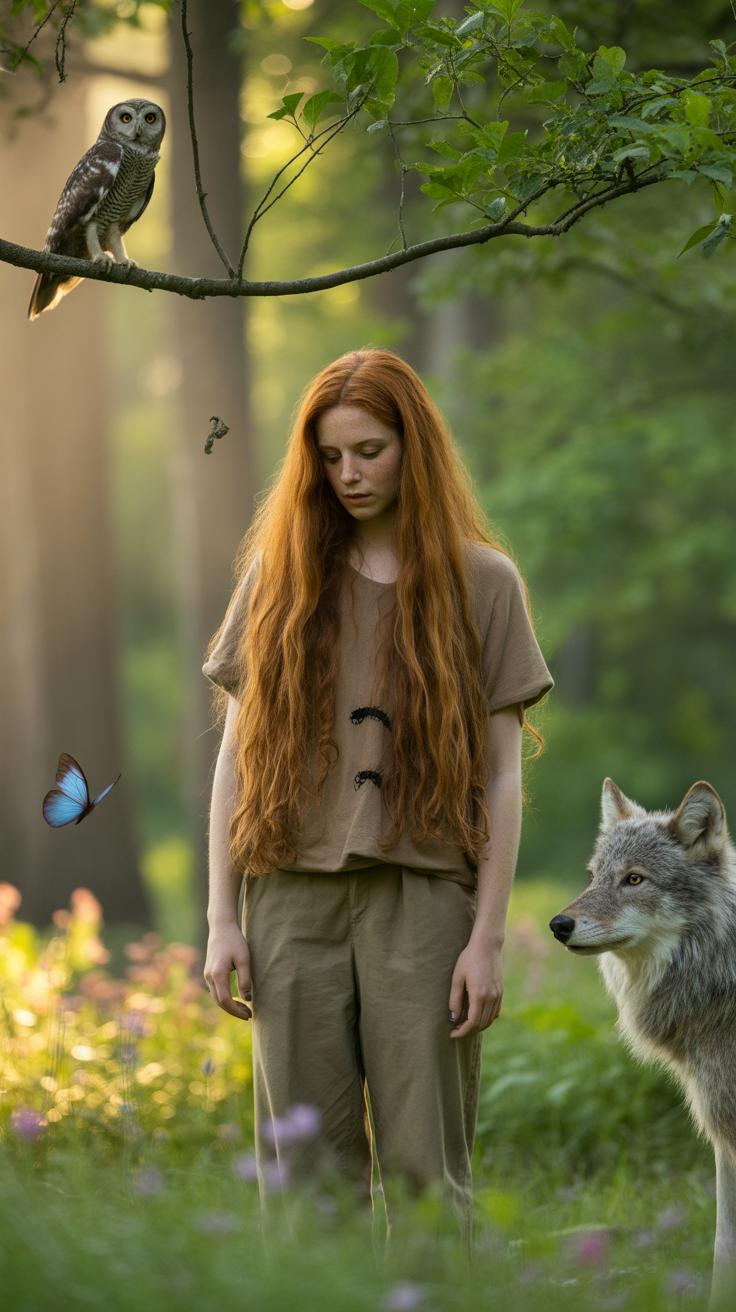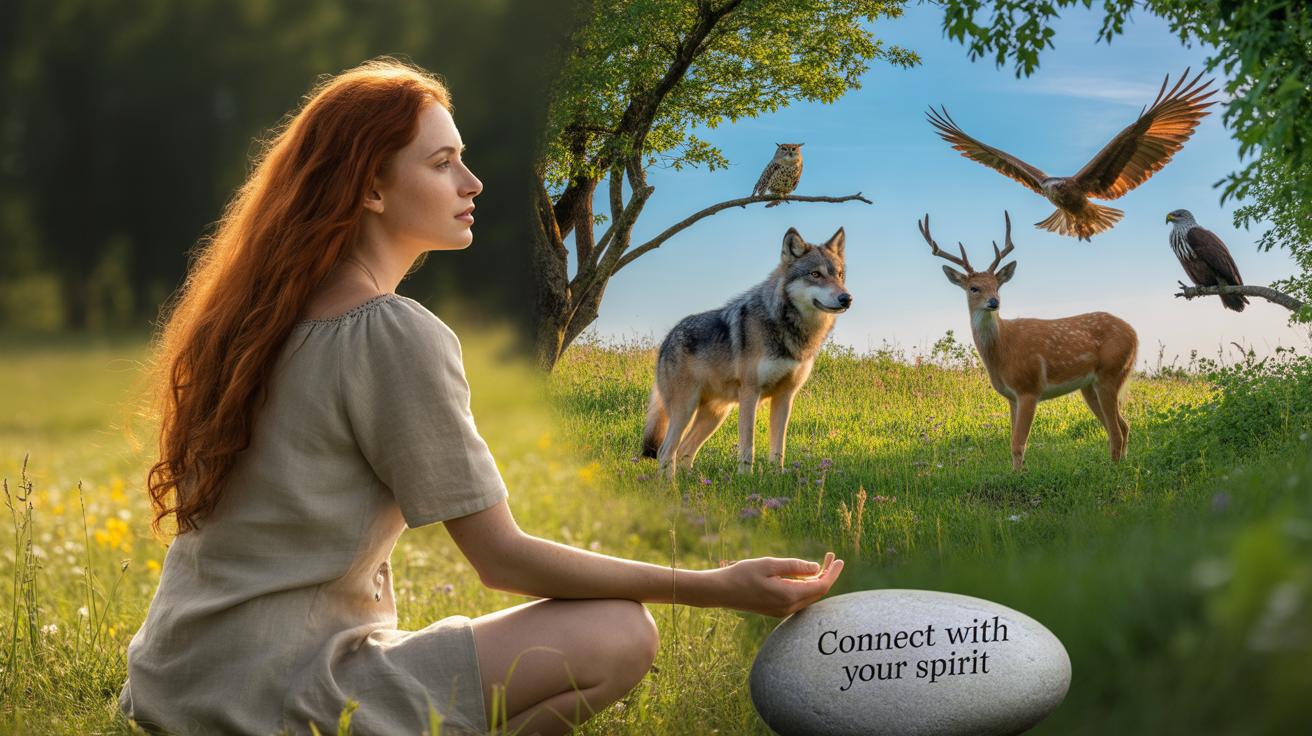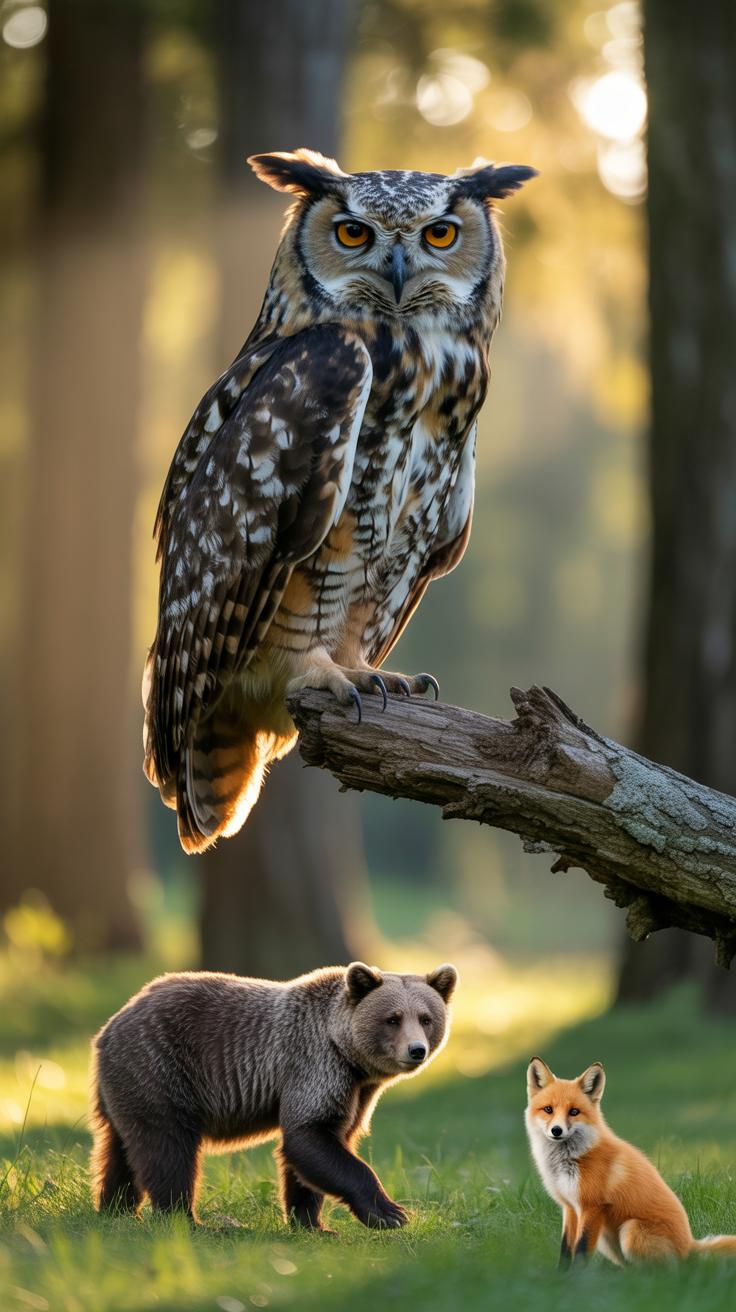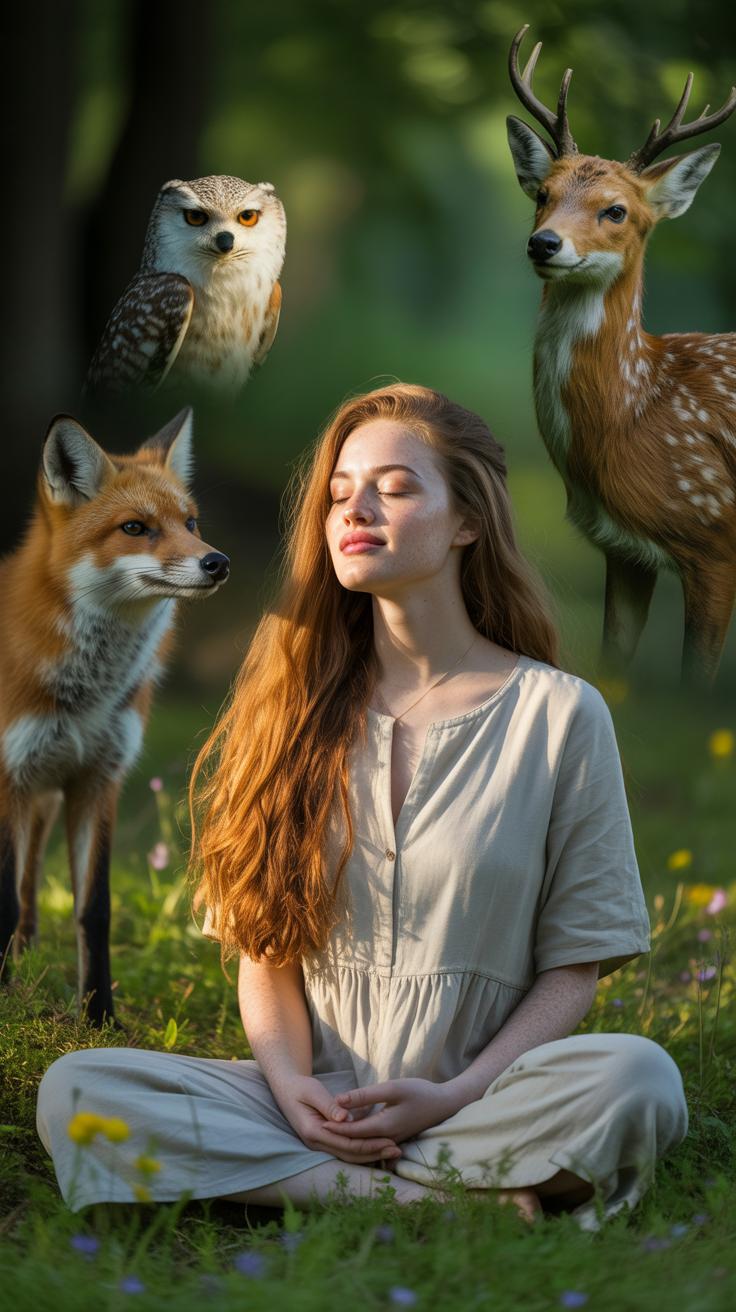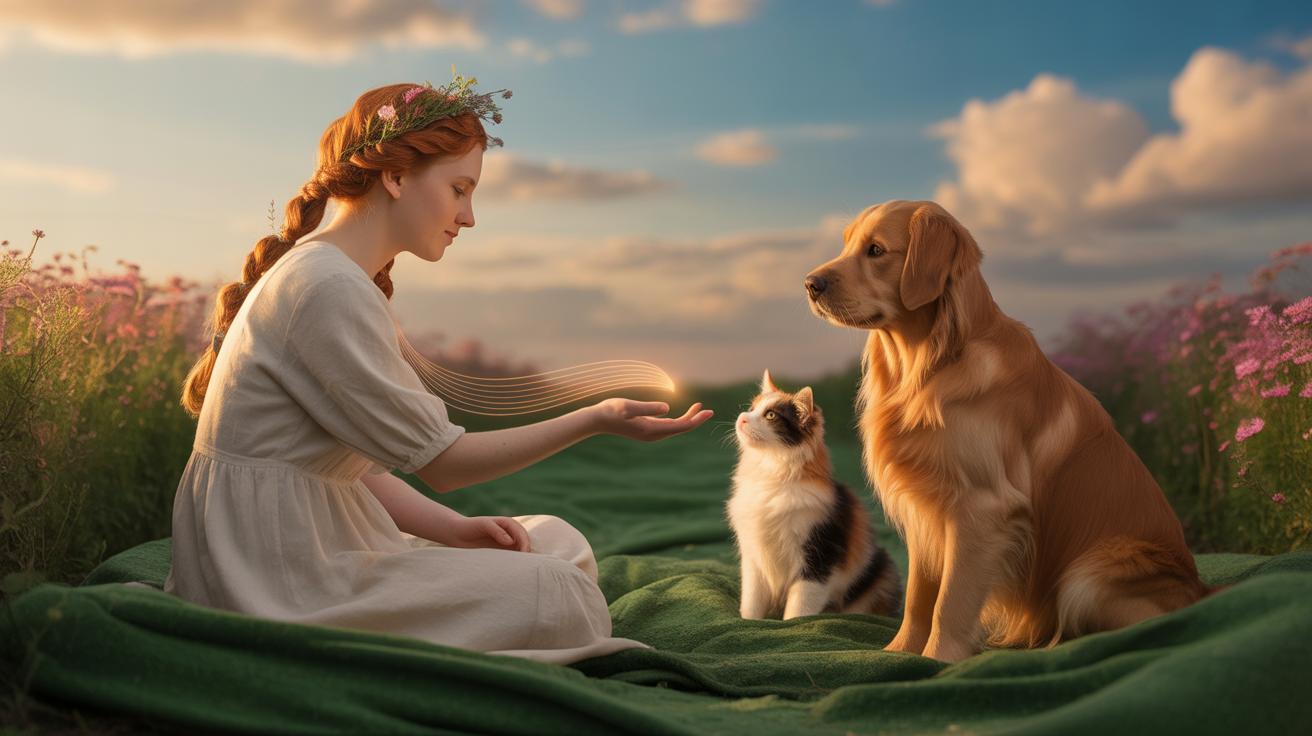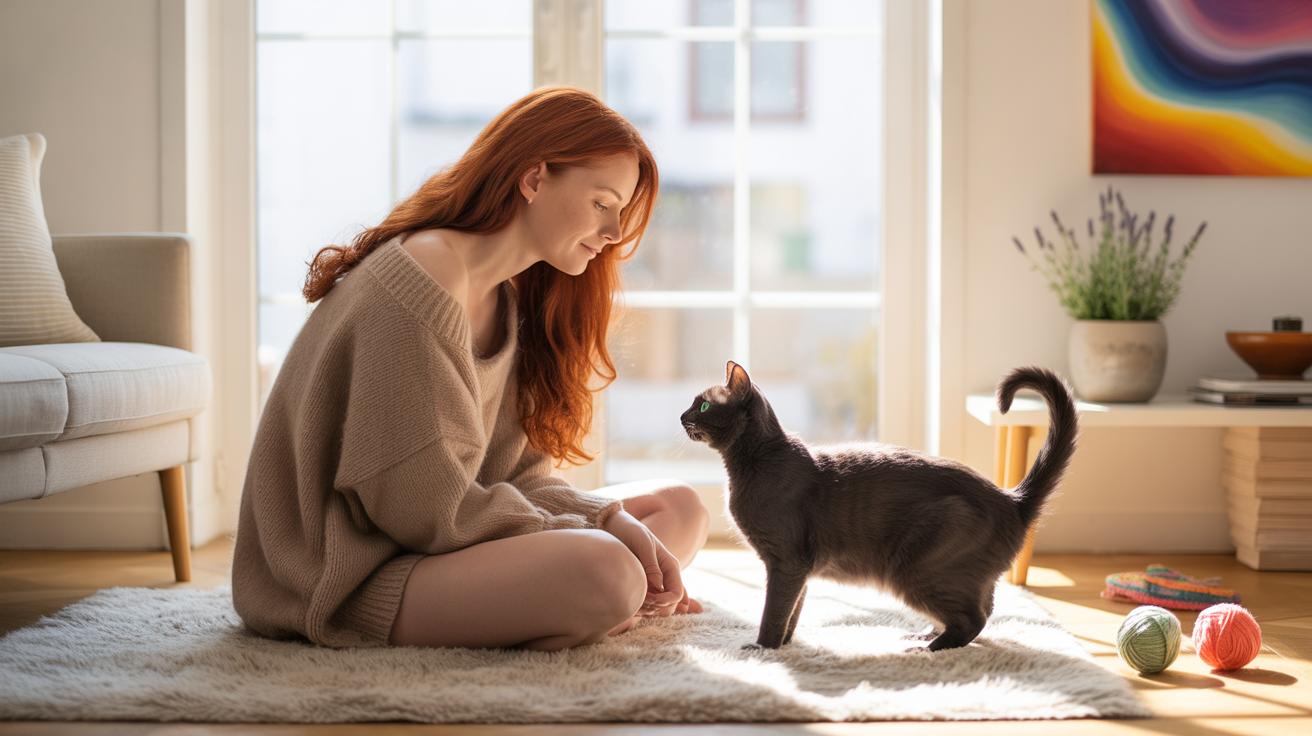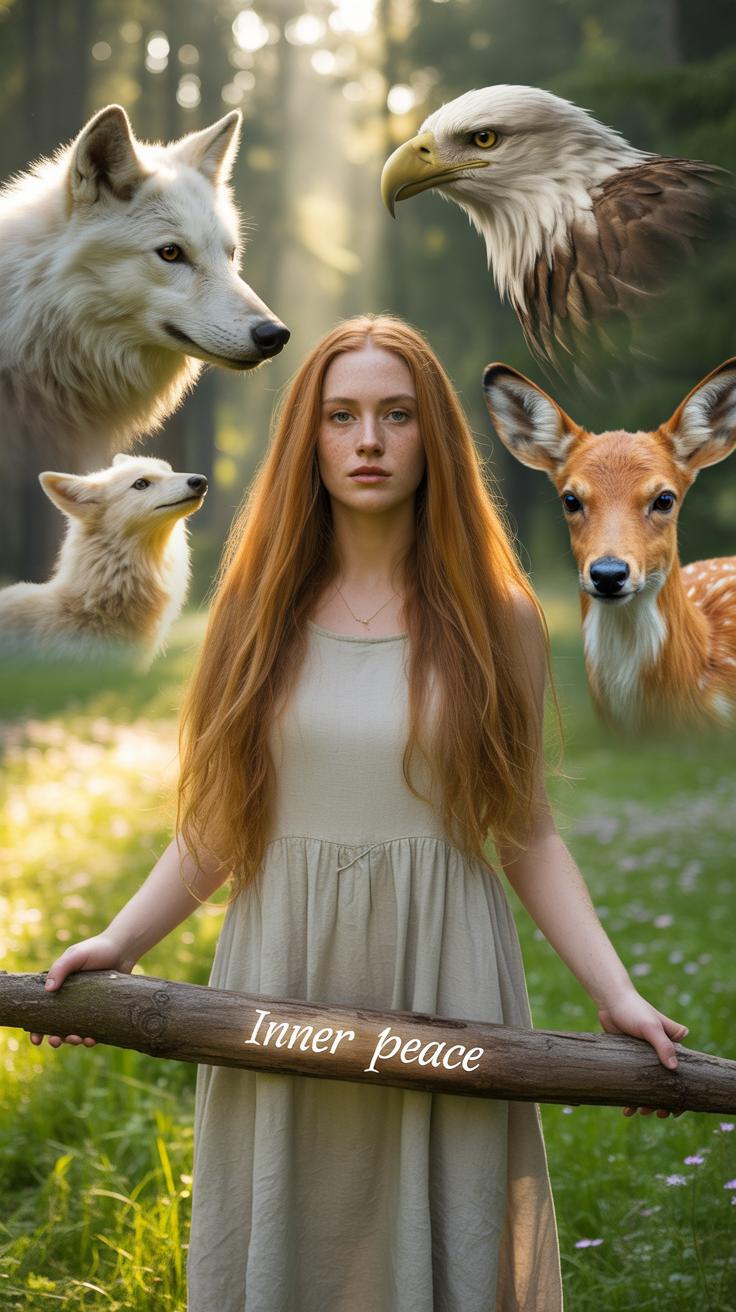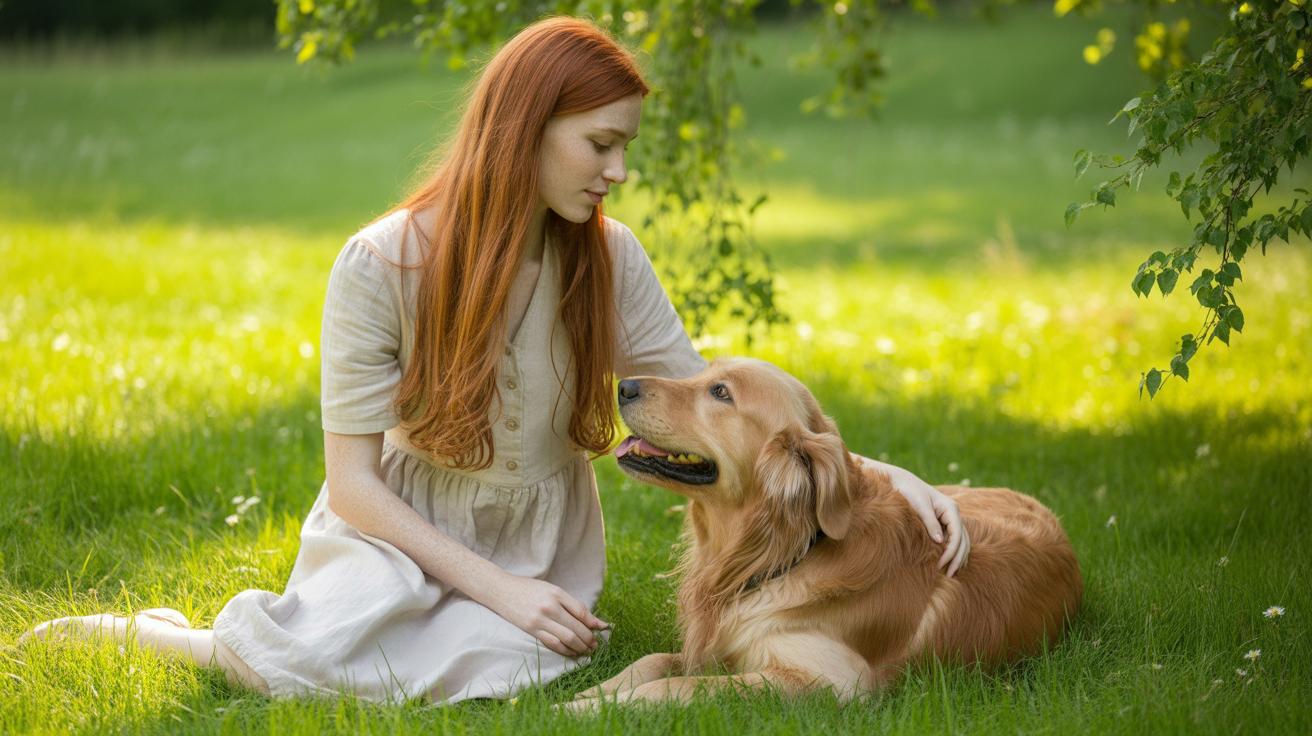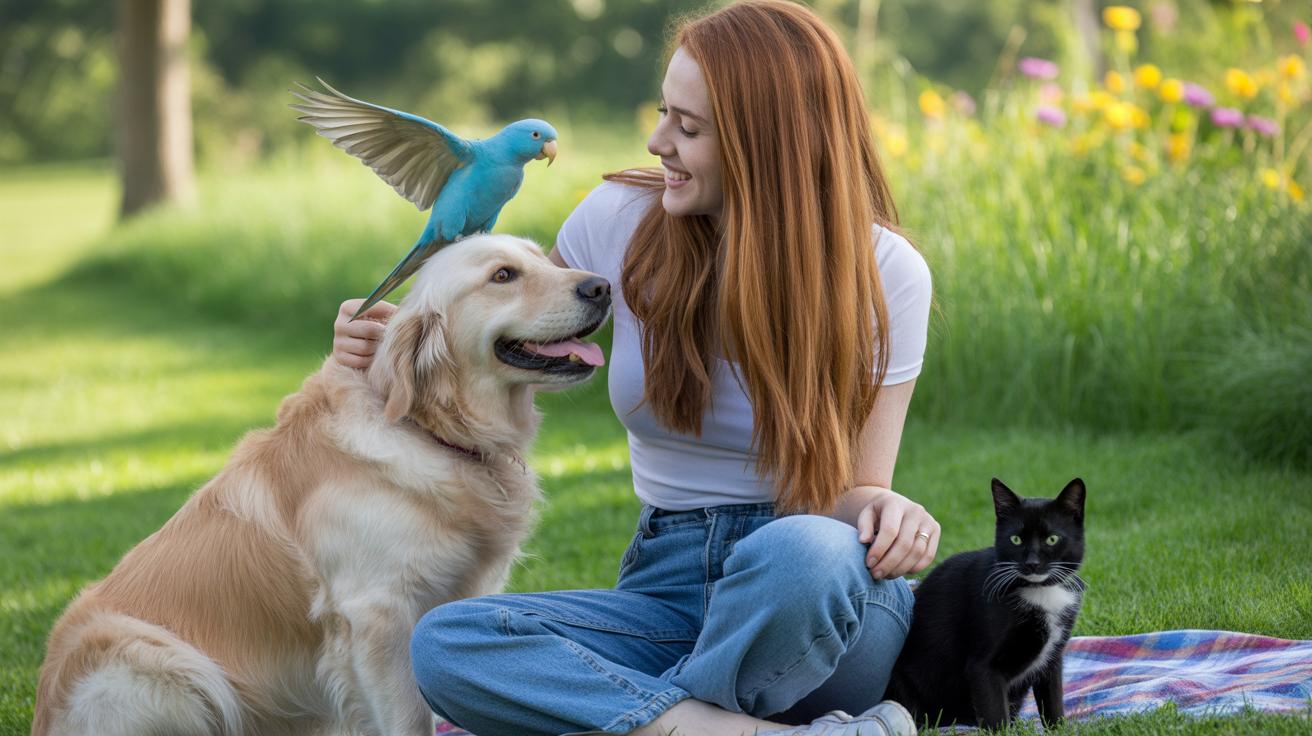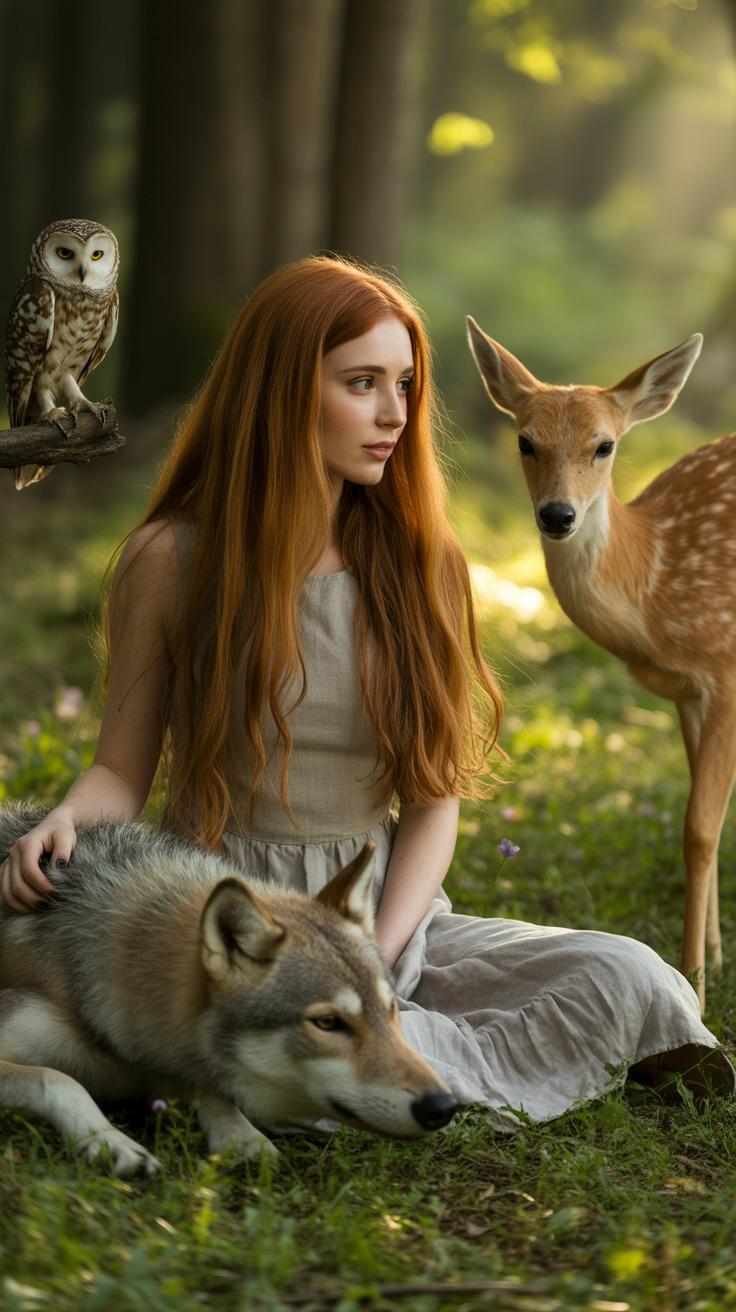Introduction
You might have heard about spirit animals but wonder what they really are. A spirit animal is believed to be a guide that connects with your inner self through an animal that reflects your traits. It can act like a friend who shows you ways to face day-to-day challenges and decisions.
This article will explore the idea of spirit animals, how they can help shape your choices, and ways you can find your own spirit animal. By the end, you will understand how to use this guidance in your life clearly and practically.
What Is a Spirit Animal
Spirit Animals in Culture and Belief
A spirit animal is more than just an animal figure—it serves as a kind of guide, protector, or source of wisdom within many spiritual traditions. Across cultures, these animals often embody traits or energies that help people connect with deeper parts of themselves or the world. For example, some Native American tribes see spirit animals as powerful allies offering insight or strength during challenges. In shamanic beliefs, a spirit animal might act as a bridge between the physical and spiritual realms, leading someone through personal growth or healing.
Different societies attach different meanings to spirit animals, which can make the concept feel broad or even confusing at times. Some traditions emphasize the protective role of a spirit animal, while others focus on the qualities the animal represents—like courage, patience, or wisdom. The way you view spirit animals can depend a lot on your cultural background or personal experiences. It’s almost like these animals carry stories that resonate uniquely with each individual.
How a Spirit Animal Reflects You
At its core, a spirit animal mirrors aspects of who you are, or sometimes who you’re becoming. Think of it as a reflection of qualities you might recognize within yourself—whether that’s resilience, curiosity, or calmness. If, for example, your spirit animal is a fox, it might hint at your cleverness, adaptability, or even a secretive side you tend to keep hidden. The connection feels a bit like looking in a natural mirror, where the animal’s behaviors and traits shine light on your own.
Yet, this is where things can feel a little uncertain. Sometimes the traits you associate with your spirit animal might clash with how you view yourself consciously. Maybe a bear representing strength feels odd if you don’t see yourself as strong—or perhaps it’s a nudge to develop that part. There’s this fluid quality in how a spirit animal represents you; it doesn’t always fit neatly. And maybe it shouldn’t. It’s worth asking yourself what your spirit animal is trying to reveal or encourage within you.
Signs to Identify Your Spirit Animal
Dreams and Visions
You might notice an animal appearing in your dreams, more than just once or twice. These aren’t always clear or obvious, and sometimes the animal feels strange or out of place — but that can be a clue. Dreams offer a kind of quiet space where your mind explores what matters underneath daily distractions. If a specific animal shows up repeatedly, it might be trying to tell you something about yourself, or about a direction you’re meant to take.
For me, I often dreamed of a fox—sometimes sly and playful, other times cautious and distant. At first, I ignored it, thinking it was random. But over time, those images stuck with me, lingered even after waking up. Maybe your spirit animal appears in dreams like this, not as a roaring lion or a soaring eagle, but something quieter, more personal.
Nature and Daily Life Clues
Outside the dream world, animals can show up repeatedly in real life too. Think about moments when an animal seems to cross your path more than you’d expect—on the street, in books or pictures, or even in conversations. Sometimes it can feel like the universe is nudging you through these signs. It might be a certain bird that appears while you’re feeling stuck, or a persistent buzzing of a bee when you need a push to focus.
Pay attention to how you feel around these encounters. Do you sense a calm or a surge of energy? Maybe an unexplainable connection. I remember seeing crows in odd places during stressful times, and it felt like a balance between mystery and intelligence was trying to reach me. These repeated visits, when noticed carefully, can help you recognize who your spirit animal really is, guiding your choices bit by bit.
Common Spirit Animals and Their Meanings
When thinking about spirit animals, certain creatures come up more often than others. These animals carry traits that resonate deeply with many people, guiding their decisions in subtle ways. Here’s a list of a few common spirit animals and what they tend to represent.
- Owl – wisdom, intuition, and seeing beyond the obvious
- Dog – loyalty, protection, and unconditional love
- Lion – courage, leadership, and confidence
- Butterfly – transformation, freedom, and lightness of being
The Wise Owl and The Loyal Dog
The owl often shows up when you’re facing a choice that requires patience or deeper insight. This animal isn’t about rushing; it’s about looking carefully, piecing things together quietly. I remember one night when a tough decision kept me awake, and an owl’s call echoed nearby. It felt like a nudge — a hint to trust my gut rather than my first impulse.
On the other hand, the dog symbolizes faithfulness and companionship. If your spirit animal is a dog, you might find yourself naturally protective of those you care about, willing to stand by them through trouble. That dependable vibe dogs carry tends to encourage you to stick to your promises, even when it gets inconvenient.
The Courageous Lion and The Free-Spirited Butterfly
The lion’s spirit is about stepping up, facing fears, and owning your worth. It’s not about aggression but about strength that comes from confidence. Sometimes, when I feel overwhelmed, I try to channel that lion energy—not by being bold wildly, but by holding steady in what I know is right. It’s surprisingly helpful.
Meanwhile, the butterfly nudges you toward change. It’s the kind of spirit animal that whispers, “Don’t be afraid to let go.” It represents growth in small, sometimes uncomfortable stages, reminding you that freedom often starts with vulnerability. You might find that butterfly energy encouraging you to try new things even though part of you resists.
How to Connect With Your Spirit Animal
There’s this quiet moment I like to seek out when the noise of daily life fades—sometimes early morning, sometimes late at night. That’s often when I feel closest to my spirit animal. Meditation can be simple but it needs patience. You might try sitting still, eyes closed, focusing on your breath. Let thoughts come and go without holding onto them. Then, gently invite your spirit animal to join you, maybe by imagining a safe place where it can appear. Don’t expect to see it right away; often, it’s more about a feeling or presence—like you suddenly sense a part of yourself shifting.
Journaling can work like a map for this journey. I keep a notebook beside my bed to jot down dreams, sudden feelings, or sketches of animals that float into my mind. Sometimes I write questions like, “What do you want me to notice today?” and see what comes up in the days after. Dreams can be strange—sometimes they don’t make sense at first, but over time they start to reveal patterns or symbols. Noticing repeated images, animals, or instincts is key here. It’s less about getting answers and more about staying open.
Spending time outdoors helped me notice my spirit animal in a new way. There was this one afternoon in the park—just watching how squirrels moved with curious energy made me realize that same restless but thoughtful energy lives inside me. So, when you’re outside, see what animals you naturally observe or feel drawn to. Trust those subtle pulls; they often point to your spirit animal without words. It’s slow work, but it’s worth it.
Using Your Spirit Animal to Make Decisions
Asking your spirit animal for guidance can feel a bit strange at first, but it becomes more natural with practice. When facing a tough choice, try to create a quiet moment—pause and focus on your breath. Then, silently invite your spirit animal to offer its insight. You might say something simple, like, “What should I keep in mind here?” or “Help me see the best path.”
The key is to stay open, even if the message doesn’t come right away or looks different than you expect. Sometimes the guidance arrives as an image, a sudden thought, or a feeling in your gut. It’s definitely not always clear-cut, so you may need to reflect on what you sense over time.
Asking for Help in Tough Choices
When you’re stuck, try these ways to reach out to your spirit animal:
- Speak aloud or silently—honestly share your dilemma.
- Visualize your spirit animal nearby, patiently watching and waiting.
- Write down your question in a journal before bedtime, then pay attention to dreams or the next day’s impressions.
- Look for quiet moments in nature where your animal might feel present.
These methods don’t guarantee instant answers, but they invite your intuition to connect with the qualities your spirit animal represents.
Recognizing Guidance Signs
After asking for help, watch for subtle signs that feel like nudges or confirmations. It could be a recurring thought popping up out of nowhere, a specific color or image catching your eye, or a shift in your emotions. Sometimes, even a brief memory linked to your spirit animal signals a deeper meaning.
Notice if you feel lighter, calmer, or more confident about a choice—that’s often a hint your spirit animal is nearby. Trust those small moments. Over time, you’ll start to distinguish between your own worries and the clearer, quieter voice your spirit guide offers.
Spirit Animals and Personal Growth
My spirit animal has always felt like a quiet presence in the background, nudging me toward a kind of growth I didn’t quite expect. It’s not about suddenly becoming someone else, but about noticing traits I might have overlooked—or avoided—and deciding to let them shape my choices. For me, the animal embodies patience, resilience, and alertness, qualities that have slowly chipped away at my old fears.
For example, when I’m hesitant about a new opportunity, my spirit animal’s calm watchfulness reminds me to pause without panic. This helps me shift from fear to curiosity, which feels like a small victory. It’s kind of like having a nudge to stay grounded, even when things look uncertain.
Learning From Spirit Animal Strengths
Using an animal’s traits as a mirror for self-improvement sounds simple, but it takes practice and reflection. What does patience really look like in daily life? For me, it’s slowing down when I want to rush, resisting the urge to jump to conclusions, and listening more closely—to others, to myself.
Sometimes I jot down moments when I tap into these traits:
- Staying calm in stressful meetings
- Trusting instincts when making choices
- Noticing small details others miss
It’s not about perfect imitation but borrowing the animal’s mindset to handle situations better. It’s a slow way of building self-awareness.
Facing Challenges With Animal Wisdom
Fears linger, though. My spirit animal doesn’t erase them but offers a different angle. When difficult moments arise, I try to remember how this animal would respond—not with avoidance, but cautious engagement. It doesn’t mean I’m always brave; sometimes, I’m just less afraid to face discomfort.
This attitude, inspired by my spirit animal, encourages me to ask:
- What can I learn from this challenge?
- How might I stay steady without rushing?
- What small step can I take now?
It’s a slow process, often uneven, but having this inner guide helps me move forward. That’s where the real value lies: not in eliminating fear, but in choosing growth despite it.
Common Misunderstandings About Spirit Animals
Pets Versus Spirit Animals
It’s easy to confuse a beloved pet with a spirit animal, but they are not quite the same. A pet is usually a living companion you care for daily—someone or something you connect with emotionally. Your spirit animal, on the other hand, acts more like a guide or a mirror to your inner self. It’s not just about affection or routine. For example, my own spirit animal has helped me see parts of myself I hadn’t acknowledged before, beyond just sharing affection or moments. That bond feels different—less about presence and more about intuition.
Of course, sometimes pets and spirit animals can overlap, but expecting your pet to be your spirit animal might limit what you learn from the experience. You might miss the subtle signs your spirit animal sends because you’re focused on the visible, familiar presence. So, try to keep both connections in their own place, even if they feel connected at times.
Expectations and Reality
Many imagine a spirit animal appearing suddenly in the form of a clear physical animal—perhaps a bird in mid-flight or a wolf crossing their path with undeniable meaning. In reality, spirit animals might show up less obviously. Sometimes they appear in dreams, moments of quiet reflection, or even repeated unexpected encounters that feel slightly off but catch your attention.
I’ve found my spirit animal sometimes shows up as a vague feeling or a fleeting image, not a precise, vivid animal. At times, I think I expected more concrete signs. But I realized the guidance comes from noticing while living your day, not waiting for something spectacular. It’s subtle, sometimes confusing, and that ambiguity is part of the process. This can be frustrating if you want clear direction, yet it can also open space for your own interpretation and growth.
Living With Your Spirit Animal
Keeping your spirit animal close doesn’t mean staring for hours, waiting for it to appear—it’s more subtle than that. I find that having small symbols related to my spirit animal around makes a surprising difference. For example, I carry a simple charm that resembles its shape, something light and easy to keep in my pocket. It’s a quiet reminder during busy or stressful moments. You might find a similar token—a piece of jewelry, a keychain, or even a small stone with its engraving—that works for you.
Other times, I place images or sculptures on my desk or by my bedside, so its presence feels like part of everyday rhythm. Even a phone wallpaper or a notebook with its image can nudge your mind back toward the guidance your spirit animal offers.
Alongside symbols, developing daily habits can deepen that connection. I try to pause briefly each morning and ask myself, “What would my spirit animal do right now?” Sometimes it’s about patience, sometimes courage, or simply paying better attention to what’s around me. These moments don’t need to be long—just intentional.
What about you? Could you find a small ritual, like a brief reflection or a few mindful breaths, that brings your guide forward? Maybe it’s writing down thoughts or challenges and reflecting on what your spirit animal might teach you about them. It’s less about control and more about opening a space where its wisdom can quietly emerge.
Conclusions
The idea of a spirit animal offers a unique way to look at yourself and your world. By recognizing qualities of your spirit animal, you can discover new views about your strengths and challenges. This can help you make clear and confident choices every day.
Your spirit animal works like a quiet friend that supports you when you need it. Trusting this connection can bring peace and guide you wisely through daily life. Now, it’s your turn to meet your spirit animal and learn what it can teach you.

